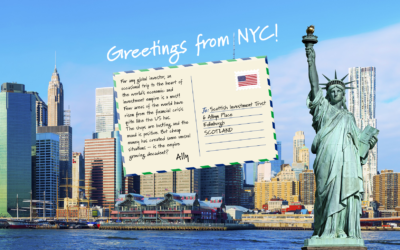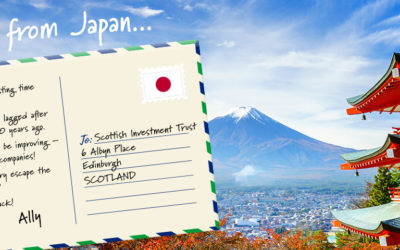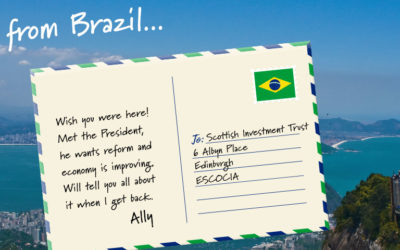05/02/20193 mins
Postcard from China: West meets East
I recently spent a few days in Shanghai, China. There was a lot going on when I arrived. Apple issued a profit warning that very day, blaming China for its slowing sales. The Chinese authorities had just published disappointing manufacturing data, and equally disappointing growth figures were soon to follow. There had just been a big default by a peer-to-peer lender. And of course, there was ample coverage of all the latest twists in the US trade war.
So what were my impressions of Shanghai? Well, it’s very big. And it’s very clean. Except the sky, that is: the pollution is terrible. But there’s not much litter, and the streets are more or less immaculate. A consequence of having so many people around, all in need of employment, is that there are lots of street-sweepers.
The street-sweepers don’t tend to come from Shanghai itself. Massive internal migration is a prominent feature of Chinese life. My driver from the airport was from the relatively impoverished northeast. People from less prosperous provinces come to the huge cities of the eastern seaboard in their hundreds of thousands – and clearly play a vital part in keeping those cities going.
Another striking feature was the flatness of Shanghai and its environs. The urban sprawl doesn’t really stop – even when you take the train to other cities like Hangzhou or Suzhou. And there are no hills to be seen anywhere. The city’s apartment blocks reminded me of Brazil; high walls and tall gates turn the compounds into serious fortresses. There are lots of guards and people paid to stand on podiums – again, it’s that need to find things for millions of people to do. The shiny shopping malls, on the other hand, could have been virtually anywhere.
Shanghai’s most distinctive feature is the Bund, its colonial-era waterfront. It reminded me of Liverpool’s grand waterfront buildings. That city was once of global importance too. The similarity in architecture and the dissimilarity in economic fortunes underscore how everything is cyclical – one of the key concepts in our contrarian investment approach.
The Bund also showcases China’s changing relationship with the West. The grand neoclassical HSBC building was among the most opulent structures in the East when it was built to the design of British architects in the 1920s. After the revolution, it was nationalised. It’s now occupied by the Shanghai Pudong Development Bank and sports a red star atop its dome. But, encapsulating China’s mix of communism and capitalism, there’s a statue of a charging bull in front, by the same sculptor who designed the one on Wall Street.
In a similar vein, the Bund’s Customs House Clock used to deliver Big Ben-style bongs on the hour. But during the Cultural Revolution, this was changed to the Communist Party favourite The East is Red. The bongs were restored in 1986 for a royal visit to Shanghai, but they were stopped in 1997. In 2003, the clock began to play The East is Red once more.
Opposite the Bund, across the Huangpu River, the clustered skyscrapers of the Lujiazui financial district were lit up at night with spectacular neon advertising. Some of this was for domestic companies, but a lot of it was for US products.
Given the trade war and the anti-American sentiment we hear so much about, I was initially a little surprised to see how prominent US goods still are in Chinese life. Despite Apple’s grumbles about the Chinese market, the iPhone was still ubiquitous. And so were Nike trainers. Most Chinese people I spoke to seemed baffled by the trade war and by Trump’s hostility to their nation.
Imitation may be the sincerest form of flattery, but the scale of China’s knock-off industry is impressive. It extends way beyond the fake Western goods pushed on tourists in the street. A scandal involving fake Dyson hairdryers hit the headlines while I was there. We also visited an elevator company that had made a virtue of reverse-engineering Western technology. And of course, this close-to-the-wind import substitution is being encouraged by the trade war – accelerating the disregard for intellectual property that annoys the US so much.
Again, everything is cyclical. And that includes the balance of global power. The Chinese were well ahead of the West in all sorts of ways for millennia, but that eventually led to complacency and decadence – and then shock when Europeans arrived with superior technology.
But is it the West that’s now in a decadent phase? And if so, is China the hungry, rising power that Western countries were in the colonial era? After enduring the bloody trauma of the wars of the sixteenth and seventeenth centuries, Europe went on to the successes of the settlement of the Americas and the Industrial Revolution. The turmoil of China’s 1949 revolution and its aftershocks profoundly reshaped the country’s institutions. Those shifts may have left it primed to continue the economic successes of the past 30 years, even as the West falls behind. Only time will tell.
This article the first in ‘Postcard from China’ series. You can read the second part here.
Please remember that past performance may not be repeated and is not a guide for future performance. The value of shares and the income from them can go down as well as up as a result of market and currency fluctuations. You may not get back the amount you invest.
Please note that SIT Savings Ltd is not authorised to provide advice to individual investors and nothing in this article should be considered to be or relied upon as constituting investment advice. If you are unsure about the suitability of an investment, you should contact your financial advisor.



